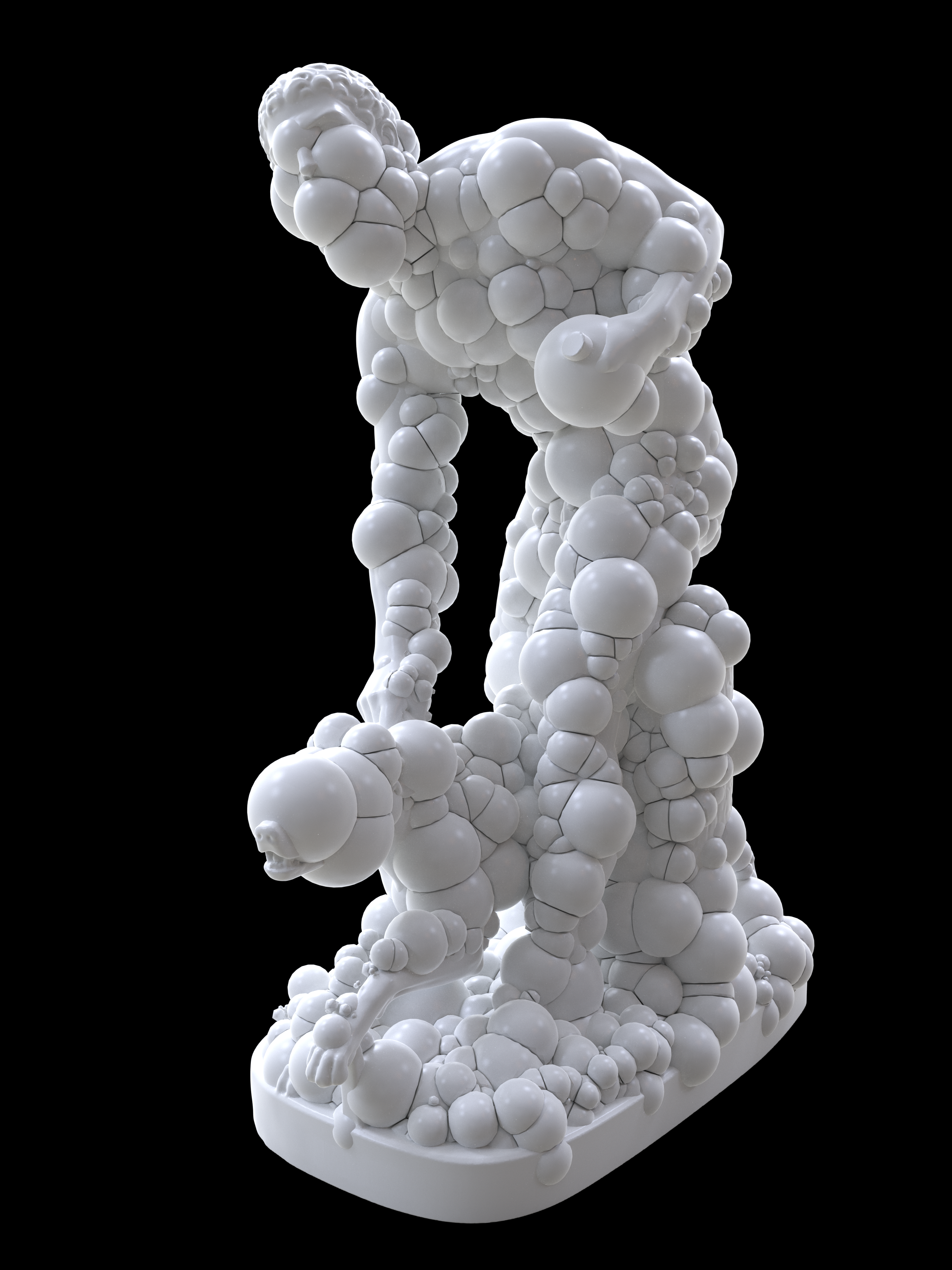HUNTER AND DOG
Genetic and evolutionary algorithms reinterpret an existing artwork
De Wilde uses digital scans and custom genetic and evolutionary algorithms as a deconstruction technique to reinterpret and update the nineteenth-century work Hunter and Dog from sculptor John Gibson R.A.(1790–1866).
Through art history, De Wilde establishes a link between humankind, science, technology and art, particularly relevant in the conversation about human evolution. In an era of ecological destruction and the fear of species going to extinct or infertility, humans are turning towards science to find a solution. CRISPR is one of the most important findings of the 21st century, it is, undoubtedly dramatically, shaping and changing our future. Never before have we had the opportunity to change our fundamental chemical nature (DNA). Now we can, and use it to decide who we would like to be. The impact is enormous – what are we going to do with this possibility, without losing the human aspect? CRISPR possibly introduces our evolution into a Post-Darwinian stage. Natural processes of cell division and morphogenesis (the biological process that causes an organism to develop its shape) are visualized in the artwork from De Wilde. The artist speculates about humankind who is able to edit nature and himself, thus determining his own biological future. Obviously, this is not without risks and raises many ethical questions that will undoubtedly determine the agenda in the coming decades.
Where are we going from here?



